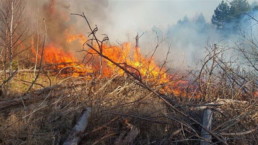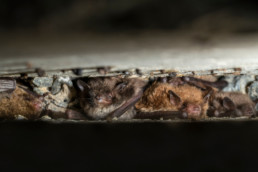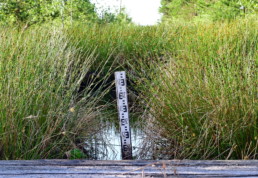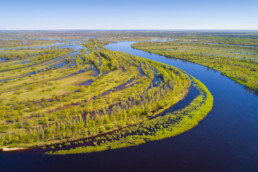Decades without man: rewilding of the Chornobyl Exclusion Zone benefits endangered birds
A new study shows the benefits of restoration in countering biodiversity loss. The paper, published in January 2022 by scientists from Belarus and Great Britain, used long-term raptor monitoring data from the Chornobyl Exclusion Zone. Data for the study was collected over 22 years, in parallel to passive rewilding of the abandoned area.
The accident at the Chornobyl Nuclear Power Plant in 1986 was one of the worst nuclear disasters that ever happened. When speaking about the long-term consequences, people naturally tend to refer to the negative impact on human health and on the environment, caused by the heavy radioactive contamination. However, there is at least one additional long-run side effect of this tragic occurrence that is often overlooked: the accident paved the way for an unparalleled case of large-scale rewilding of a settled region. On about 470,000 hectares of land that had formerly been densely populated and used for intensive agriculture, human activities ceased almost completely from one moment to the next. The people who once called this region home had to move away, the farmland was abandoned, and drainage canals were locked to prevent the spreading of wildfires and contaminated water. But the retreat of the population did not mean that all life had left the area. Nature took its chance and began to reclaim the territory, at its own will and pace.
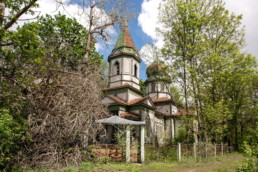
This rewilding process has been observed by researchers for more than two decades. The findings are impressive: From 1999 to 2017, the wetland area increased by 680% and forest area by 14%. Now, more than 30 years after the accident, the territory looks like Polesian wetland habitats in northern Ukraine or southern Belarus, with typical seasonal floods and large mires.
Wilderness is advancing: who wins and who loses out?
The transformation of the animal communities was expected to be enormous after the massive decrease of human impact. Over a period of 22 years – from 1998 to 2019 – ornithologist Valery Dombrovski monitored population sizes, species composition, and habitat changes of birds of prey nesting in the Chornobyl Exclusion Zone. Parts of this study were supported by the Polesia – Wilderness without Borders project. The study area spans over 14,700 hectares of former farmland that had been intensively used until 1986.
During the study period 13 breeding species of daytime predators were recorded, and both species composition as well as the number of individuals changed significantly.
For instance, the globally endangered Greater Spotted Eagle (Clanga clanga), which relies on wetland habitats to hunt and is very sensitive to human disturbance, had been locally extinct in the area at the time of the nuclear catastrophe. 33 years later, in 2019, four pairs were recorded at the study site, and at least 13 pairs were known to be nesting in the whole Belarusian part of the Chornobyl Exclusion Zone. Today, this region is the only part of the world where the population of this rare species is growing. The increase of wetland areas alongside low levels of anthropogenic influence in the Chornobyl area created favorable living conditions for the Greater Spotted Eagle, which may help save this threatened species from extinction.
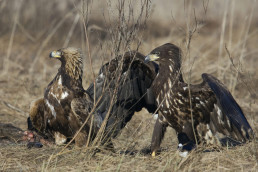
Another (locally) endangered raptor that reacts sensitively to human presence is the White-tailed Eagle (Haliaeetus albicilla). Before the nuclear accident, this bird could not be found in what is today the Chornobyl Exclusion Zone. Only in 1992, White-tailed Eagles were first sighted here, and by 2010 their number had increased to 20 pairs. Unlike the Greater Spotted Eagles, White-tailed Eagles are non-migratory, so the availability of prey in winter is crucial for their survival. And here is how the true value of rewilding reveals itself: a functioning ecological community has returned to the area, composed of various species that sustain and support each other. Along with the birds of prey, top predators like wolves as well as their prey species (such as deer and moose) established viable populations, so that there is enough carrion for the White-tailed Eagle to make it through the cold season.
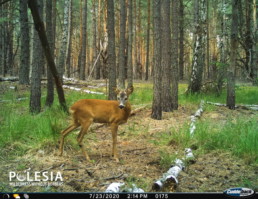
While the Greater Spotted Eagle and the White-tailed Eagle profited from the abandonment of the area, the scientists also observed decreasing populations of certain bird species. This applies to raptors that prefer hunting in farmland, such as Montagu’s Harrier (Circus pygargus), Lesser Spotted Eagle (Clanga pomarina), Honey Buzzard (Pernis apivorus), and Common Buzzard (Buteo buteo). Interestingly, at the beginning of the monitoring work in 1998, the population sizes of these species in the Chornobyl Exclusion Zone were much higher than the regional average.
Overall, the study shows that the passive rewilding of ecosystems is a complex and lengthy process. Some species needed nearly two decades to build stable populations, and others, like the Greater and Lesser Spotted Eagle, are still adapting. The Greater Spotted Eagle started colonizing the Chornobyl Exclusion Zone only 15 years after humans had left. Therefore, a long-term dynamic monitoring is the only way to assess the restoration process and the development of species composition and population sizes. But it has already become obvious that passive rewilding can bring European lowlands back to a near-natural state – both on the ecosystem as well as on the biodiversity levels.


